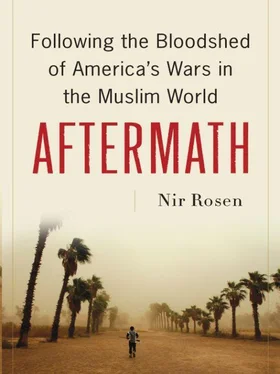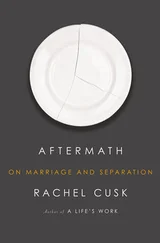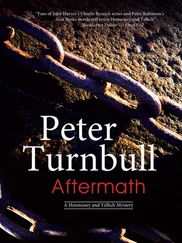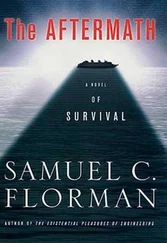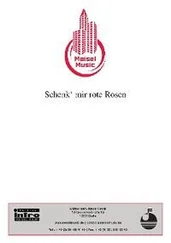Sunni Arabs were the primary victims of the sectarian cleansing in part because they were the weaker party, subject to attacks by the Americans, the new Shiite-dominated security forces, and the Shiite militias. But Sunnis also were more likely to live in Shiite areas than Shiites were to live in Sunni areas. While there were few Shiites in the Anbar province or in the north, there were significant Sunni minorities in the south. Many have been expelled from their homes.
The Iraqi elections of January 2005 enshrined the new, sectarian Iraq. The Shiite government unleashed its vengeful militias on Sunnis, replicating Saddam’s mass graves, secret prisons, torture, and executions. Neighborhoods were cleansed of their minorities, and a once-diverse fabric frayed and came apart. Baghdad was slowly emptied of its Sunnis. Iraq fell apart. The violence was systematic and horrific. Rapes, beheadings, and extreme torture were used as strategic weapons. Kidnappings reached levels exceeding those of Colombia, Mexico, or Pakistan. Millions of Iraqis were internally displaced. Millions more became refugees in neighboring countries. Iraq’s middle class, business class, intellectuals, doctors—all left the country. It was one of the fastest destructions of a country and its polity in history.
With the removal of Saddam’s regime, mosques and clerics acquired an inordinate power in Iraq. Though only one of many complex factors influencing life in the Muslim world, the mosque traditionally had an important role in the community, one that encompassed the religious, social, and political. The call to prayer echoed through neighborhoods five times a day, serving to regulate time and the cycle of life. The mosque was a place for men to pray, learn, talk, bond, and mobilize for collective action. The Friday khutba (sermon) was often a call to action, in which the imam—the head of the mosque, who led prayer—would lecture his flock about issues that mattered to the community, from religion to international affairs. Particularly in authoritarian states, the minbar (pulpit) is a rare source of alternative authority. Likewise, in authoritarian states that restrict freedom of expression, the khutba is an important alternative source of information and views. In post-Saddam Iraq the mosque became the most important institution in the state. It served to unite communities, functioning as a provider of welfare and a weapons depot, a source of news and a rallying point. Certain mosques became key locations in neighborhoods or even rallying points for movements and sects; they became the perfect vantage from which to watch how sectarianism became a dominant and destabilizing force in Iraq.
I first visited Baghdad’s Adhamiya district on Friday, April 18, 2003, for the triumphal return of Dr. Ahmad Kubeisi, Iraq’s most famous living Sunni theologian and a television preacher who had been based in the United Arab Emirates. A staunch Sunni bastion in majority-Shiite eastern Baghdad, Adhamiya was named for its mosque of Al Imam al-Adham, “The Greatest Imam,” as the 1,300-year-old mosque and tomb of Abu Hanifa al-Nu’man was called. Abu Hanifa was a ninth-century theologian whose legal judgments are still followed by about half the world’s Muslims. The Abu Hanifa Mosque is Iraq’s most important Sunni shrine, visited by hundreds of thousands of pilgrims a year. It had been a favorite mosque of the former Iraqi government; before the war Iraqi state television often broadcast Friday prayers from there. In the past, the imam, Sheikh Abdul Ghafar al-Kubaisi, had held up a Kalashnikov during his sermons, exhorting his listeners to protect Saddam and his regime. He was now in hiding.
Adhamiya sits on the east bank of the Tigris River, right across from the important Shiite neighborhood of Kadhimiya. Many of Iraq’s Shiites believe that Abu Hanifa was a treacherous student of Imam Kadhim, a key religious leader venerated by Shiites who participated in Kadhim’s killing, and some had a tradition of spitting in the direction of the shrine when they passed by it. Others told a story that Abu Hanifa had committed suicide by throwing himself in a barrel of acid. In fact, my friend Sayyid Hassan Naji al-Musawi, a close ally of the Shiite cleric Muqtada al-Sadr in Baghdad and a commander in Sadr’s Mahdi Army, once confided to me that Abu Hanifa was an “ ibn zina ” (son of adultery), and that a “dog is buried there.” Salafis, whose numbers in Adhamiya had grown in the 1990s, also despised the mosque, which was revered by Sufis, because of the Salafi rejection of all shrines and tombs. After the war, posters of Saddam could still be bought in Adhamiya, and some Shiites called it “Saddamiya.” Shiite mosques in the district were frequent targets of Sunni attacks.
Adhamiya was both very old and very rich, and the former regime found many supporters there. Up-and-coming Baathists would often purchase a house in the district once they could afford it. In March 2003, just before the war started, Gen. Mustafa al-Azzawi—who would command the Iraqi forces that fought the invading U.S. Army in Nasiriya, in southeast Iraq—began building a home in Adhamiya. Saddam himself hid there during the Gulf War of 1991. Afterward he appeared on Iraqi television to thank the people of Adhamiya for helping him, and declared it Baghdad’s original neighborhood.
On Wednesday, April 8, 2003, Saddam was spotted and filmed at a rally outside the Abu Hanifa Mosque. He wore his military uniform and was flanked by a man resembling his son Qusay. The cheering crowds lifted Saddam up onto a car hood, from where he waved. A voice in the film that was made of the event said, “Conquered people eventually triumph over invaders. Your leadership is not weakened.” On April 10 a fierce gun battle occurred in Adhamiya between members of the First Marine Expeditionary Force and what U.S. Central Command called “an Iraqi leadership group trying to get together for a meeting” in the house of a top Baath official. One vehicle was hit by three rocket-propelled grenades and at least one marine was killed in the seven-hour battle.
Adhamiya was the last part of Baghdad to fall. The defenders were mostly foreign fighters who regrouped from the rest of the country and tenaciously held out. Twenty-two prisoners were taken from the mosque, including its sheikh, Watheq al-Obeidi, and his two sons. Some of the prisoners were not Iraqi. Inside, a cemetery for “the martyrs of April 10” would be built. Before the gravestones were ready, the names of at least twenty dead foreign fighters—including Egyptians, Syrians, Lebanese, and Yemenis—were written on paper and put into soda bottles stuck into the ground. Foreign fighters who had survived were hidden in mosques or homes by sympathetic locals; some were even driven to the Syrian or Iranian border. The mosque itself was damaged, its walls pockmarked with deep holes and its minaret nearly cracked in two, with a gaping hole left by a missile launched from an American plane several hours after the April 10 battle. A nearby telephone exchange was destroyed by American bombings, and the buildings across from the mosque were blackened from the attacks. A dozen burned-out cars, including Sheikh Watheq’s blue Volkswagen Beetle, blocked traffic. To prevent looting after the battle, Adhamiya’s residents formed a committee of armed volunteers. Life began to return to normal, with the tea houses across from the mosque open and the neighborhood’s men gathering once more to chat and play dominoes.
A week after the gun battle, as looting was still occurring across Baghdad and the Ministry of Information was emptied and set aflame, loudspeakers atop the U.S. Army’s Humvees warned in Arabic that if the looters did not immediately leave, “there will be consequences.” Meanwhile, the recently returned Dr. Kubeisi warned the Americans in his sermon of the consequences they would face if they did not leave immediately. For Kubeisi’s triumphal return the mosque was covered in banners proclaiming “One Iraq, One People,” “No to America,” “We Reject Foreign Control,” “Sunnis Are Shiites and Shiites Are Sunnis; We Are All One,” “All the Believers Are Brothers,” “Leave Our Country, We Want Peace,” and similar proclamations of national and Islamic unity. Demonstrators chanted “No to America, no to Saddam, our revolution is Islamic!” The angular and white-bearded Kubeisi had been a strident opponent of the war, which he had warned would fail, but shortly after he was proved wrong he made haste from his comfortable life in Dubai for Baghdad, reportedly being flown in from Amman on an official UAE private jet.
Читать дальше
